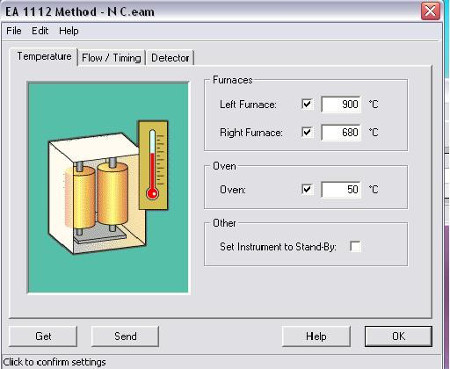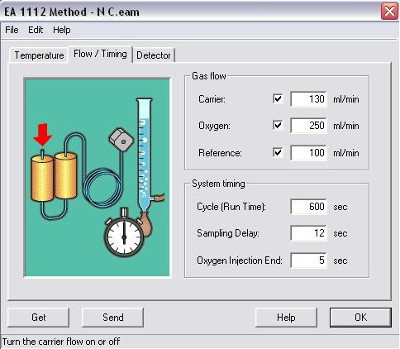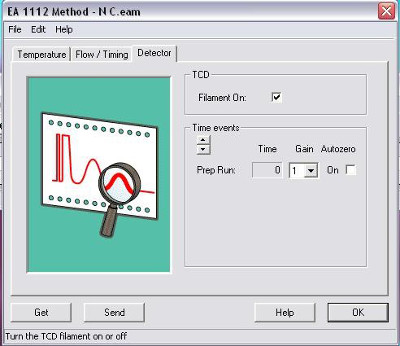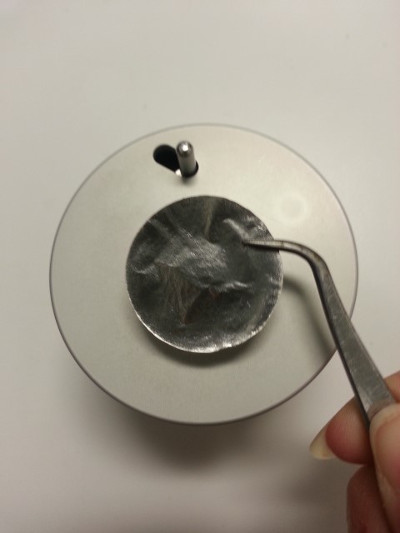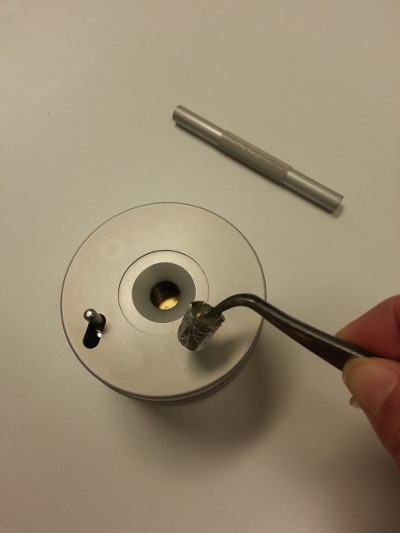Carbon and Nitrogen Analysis of Environmental Samples
Source: Laboratories of Margaret Workman and Kimberly Frye - Depaul University
Elemental Analysis is a method used to determine elemental composition of a material. In environmental samples such as soils, scientists are particularly interested in the amounts of two ecologically important elements, nitrogen and carbon. Elemental analysis by the flash combustion technique works by oxidizing the sample with a catalyst through combustion in a high-temperature chamber. The products of combustion are then reduced to N2 and CO2 and detected with a thermal conductivity detector.
Unlike other methods for total nitrogen determination (Kjeldahl method) and total carbon determination (Walkley-Black, Heanes or Leco methods), the flash combustion technique does not use toxic chemicals and is therefore much safer to use.
This video will demonstrate combustion-based elemental analysis using the Flash EA 1112 instrument from Thermo Fisher Scientific.
1. Preparation of Soil Samples
- Dry soil samples at 60 °C for 48 h.
- Pass the soil through a 2 mm x 2 mm sieve.
- Put approximately 5 g of the soil into the ball mill grinder and grind for 2 min. It is important to get a homogeneous sample since your sample size will be very small.
- Put milled soil into a small container and store in a desiccator until ready to use.
2. Setting up the Instrument Parameters
- Turn on the Flash EA 1112 in
A chromatogram for each sample is produced showing the amount of nitrogen and carbon in the sample (Figure 7).
The areas under the curve at each of the peaks in the sample chromatogram are compared to the standard curves (Figures 8 and 9), and the amount of nitrogen and carbon in the sample is calculated. Based on the weight of the original sample, the %N and %C is calculated (Figure 10).
The Carbon to Nitrogen (C:N) ratio in soil is a ratio of the mass of carbon to the mass of nitrogen in the soil sample. The C:N ratio of soil and anything put on the soil (like crop residue cover) can affect crop residue decomposition and nutrient cycling. Soil microorganisms have a C:N ratio of approximately 8:1. To maintain this ratio, they must acquire their carbon and nitrogen from the environment. However, since some of the carbon that the microorganisms acquire must be used as a source of energy in addition to what
Atla...
Bu koleksiyondaki videolar:

Now Playing
Carbon and Nitrogen Analysis of Environmental Samples
Environmental Science
29.3K Görüntüleme Sayısı

Tree Identification: How To Use a Dichotomous Key
Environmental Science
81.1K Görüntüleme Sayısı

Tree Survey: Point-Centered Quarter Sampling Method
Environmental Science
49.3K Görüntüleme Sayısı

Using GIS to Investigate Urban Forestry
Environmental Science
12.5K Görüntüleme Sayısı

Proton Exchange Membrane Fuel Cells
Environmental Science
22.0K Görüntüleme Sayısı

Biofuels: Producing Ethanol from Cellulosic Material
Environmental Science
53.0K Görüntüleme Sayısı

Testing For Genetically Modified Foods
Environmental Science
89.4K Görüntüleme Sayısı

Turbidity and Total Solids in Surface Water
Environmental Science
35.8K Görüntüleme Sayısı

Dissolved Oxygen in Surface Water
Environmental Science
55.6K Görüntüleme Sayısı

Nutrients in Aquatic Ecosystems
Environmental Science
38.8K Görüntüleme Sayısı

Measuring Tropospheric Ozone
Environmental Science
26.4K Görüntüleme Sayısı

Determination Of NOx in Automobile Exhaust Using UV-VIS Spectroscopy
Environmental Science
30.0K Görüntüleme Sayısı

Lead Analysis of Soil Using Atomic Absorption Spectroscopy
Environmental Science
125.2K Görüntüleme Sayısı

Soil Nutrient Analysis: Nitrogen, Phosphorus, and Potassium
Environmental Science
215.6K Görüntüleme Sayısı

Analysis of Earthworm Populations in Soil
Environmental Science
16.4K Görüntüleme Sayısı
JoVE Hakkında
Telif Hakkı © 2020 MyJove Corporation. Tüm hakları saklıdır
